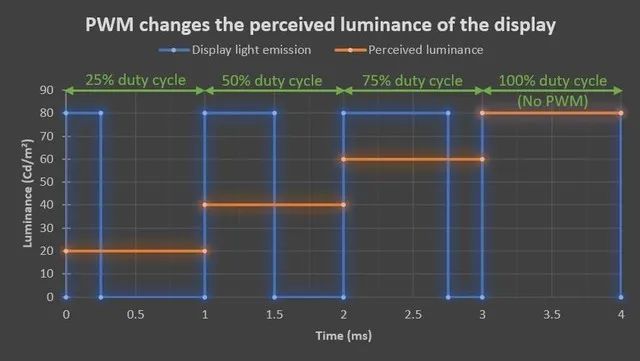What’s so bad about the Apple experience? Five pain points tell you!
Jan-29-2024
admin
The iPhone had an excellent year, with the global smartphone market growing 8% to 320 million units. It ended seven consecutive quarters of decline. Following the launch of the new iPhone, Apple led the world with 24% market share in the fourth quarter.

Apple’s such a high average price to achieve such results, indeed achieved a wide range of consumer recognition, but there are still a lot of people did not choose the iPhone. so what are the pain points of the iPhone? Here is a summary for you.
Sky-high storage
In the past two years, the price of cell phone storage has fallen, and many thousand-dollar machine storage has reached 256GB starting, and the highest specification has reached 1TB, while the price can still be maintained at less than 3,000 Rmb.

The iPhone 15 Pro 128GB is priced at 7,999 Rmb, and the 1TB version is priced at 12,999 Rmb, a difference of 5,000 Rmb, which is hard for consumers to accept, and they have to pay 1,000 Rmb more for 128GB. Many people have raised questions: Apple’s storage is made of gold?
In addition, the iPhone adds 1,000 Rmb for each upgrade of 128GB; iPad and iPad Air 64GB upgrade to 256GB adds 1,200 Rmb; iPad Pro adds 800~900 Rmb for each upgrade of 128GB; Mac memory adds 1,500 Rmb for each upgrade of 8G, and hard disk adds 1,500 Rmb for each upgrade of 512G.
No one cares about the flickering screen

Cell phones are entering the era of OLED screens, which have a lot of advantages over LCD screens. But the OLED screen has a screen flicker problem that iPhone has never cared about. Flickering is the constant alternation of the screen going on and off. Flicker is measured in hertz (Hz), which is a quantized oscillation frequency. While we may not be aware of the flicker phenomenon, physiologically, the eye still responds to flicker, with the iris expanding and contracting in response to changes in brightness.
This involuntary physiological response can explain our headaches, especially after long periods of screen viewing, when the eyes feel tired – because they have been working hard. Yet OLED screens that support DC dimming or PWM dimming technology don’t have this problem.
If this is a common problem of OLED screens the author is certainly acceptable, but the shortcomings of the iPhone is why it is still low-frequency dimming, why there is no DC dimming, reduce screen flicker and other functions. Of course, there are many people who are not sensitive to screen flicker. The most eye-friendly way is still to use it in a bright environment.
Interactive experience is not in place
Android phones generally support “side slide back”, while the iPhone does not have the traditional sense of the “return button”, such as the iPhone 15, its full-screen gestures only “slide up to return to the desktop “Swipe up to return to desktop” and “Swipe up to hover to manage multitasking”.
Apple has given the interaction of “return to the previous level” to APPs, and the operation is a unified “left inward slide”. Most people use the phone with their right hand, which means that if you buy a large-screen version of the iPhone, then “back to previous level” may be an inconvenient operation for many consumers, and many apps have the back button in the upper-right corner, which is out of reach of the thumb.
This “bad habit” is selected from the early iPhone small phone, 4-inch small phone, you can realize the one-handed grip, the thumb can cover the entire screen, but now the iPhone screen becomes larger, and is a full-screen, but also along with the upper-left corner of the return to the interaction, now is not a good choice.
No call recording
Automatic call recording is really a good feature, especially during a call, a lot of content is needed to be recorded, and so on to think about recording, the probability is that the recording time will be wrong. Domestic Xiaomi has done a good job of recording calls. Xiaomi can automatically record the contents of the call, and can be uploaded to the cloud, and can also automatically record WeChat calls, organized into text.
So why isn’t Apple on this feature?
In many countries and regions, including but not limited to the United States, the United Kingdom, Greece, Australia, India, etc., unauthorized recording of telephone calls may be considered a violation of an individual’s right to privacy or even a violation of the law. In order to ensure the global compliance of its products, Apple will not build the automatic call recording feature into its iOS system.
And in the latest version of iOS, such apps may not work properly or no longer be allowed on the App Store due to Apple’s enhanced privacy protection mechanism.
System is not open enough
It is the current consensus that iOS is closed and Android is open.
Apple exercises strict control over the distribution of apps, and all apps that want to be installed on iOS devices must be distributed through Apple’s official app store, the App Store. This means that users are not free to install apps from third-party sources like they can on Android.
All apps submitted to the App Store by developers go through Apple’s review process to ensure compliance with Apple’s App Store Review Guidelines. This includes, but is not limited to, evaluation of privacy policies, content appropriateness, functional integrity, and competition with existing features. Apps that have not been reviewed and approved are not allowed to go live.
iOS upgrades are under the sole control of Apple, and users cannot choose not to update or modify the underlying system code on their own. At the same time, the interface and functions of iOS devices are highly uniform, and users cannot customize the system as deeply as they can on Android. As a result, Android users can customize their own fonts, themes, and so on, while iPhone users can’t make changes.
What other pain points do people find with the iPhone?